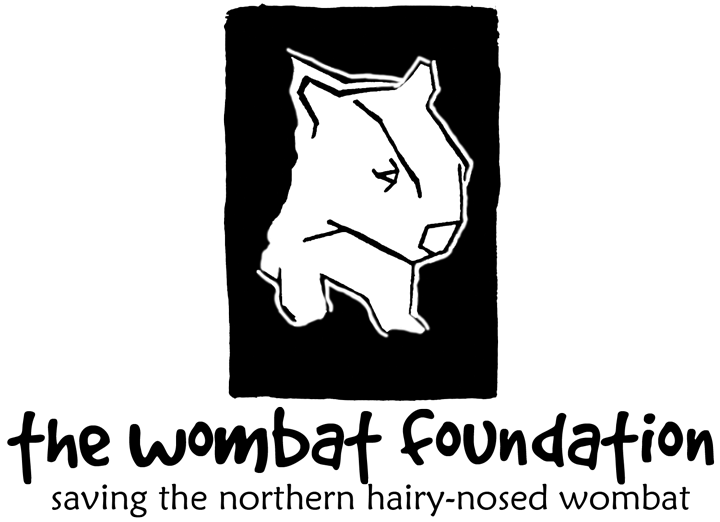Hairy-Nosed Day 2021: Spotlight on the Department of Environment and Science
On Hairy-Nosed Day The Wombat Association would like to acknowledge the vital work of Dr Alan Horsup, Dave Harper and Jenny Molyneau from the Department of Environment and Science in helping to bring the species back from the brink.
To find out more – read about them and their work below
Dr Alan Horsup

My name is Dr Alan Horsup and I manage the northern hairy-nosed wombat population at Epping Forest National Park in central Queensland. I am a Senior Conservation Officer with Threatened Species Operations of the Queensland Department of Environment and Science.
I have been working to help save this critically endangered species for nearly 30 years. In that time, I have witnessed an increase in numbers from just 65 wombats in one population to more than 250 in two populations. This has resulted from a lot of hard work by staff from the Queensland Government, the Wombat Foundation, volunteers, students and other organisations.
I love northern hairy-nosed wombats because they are so well adapted to their harsh environment that can vary from incredibly hot to very cold, and from drought-stricken to flooded, sometimes in the space of just a few months.
Dave Harper

My name is Dave Harper and I am a Principal Conservation Officer with the Queensland Department of Environment and Science, Threatened Species Operations. I have been working to help conserve and recover the northern hairy-nosed wombat since 2006. Over this time, I have been fortunate enough to be involved with several key wombat projects including the trial translocation within Epping Forest National Park and the relocation and management of the second population at Richard Underwood Nature Refuge.
As part of my current role, I work with a team of dedicated people to search for more wombat habitat in the species’ former range in Queensland, with the aim of establishing a third northern hairy-nosed wombat colony.
One of the things I admire about the northern hairy-nosed wombat is their ability to excavate and live in very impressive burrow structures. Not only do these burrows house and protect the wombats, they also provide shelter for many other species, big and small, such as reptiles, birds, insects and other mammals.
Jenny Molyneaux

Hi, I’m Dr Jenny Molyneux. I have been working as a Senior Conservation Officer for the Department of Environment and Science with Threatened Species Operations since April 2019. My primary role is managing the northern hairy-nosed wombat population at Richard Underwood Nature Refuge.
Although I have worked in threatened species management, research and recovery for over 15 years, I have only been part of the wombat team for a relatively short period of time. Working with such an experienced wombat team has provided me the opportunities to increase my knowledge on this amazing Australia mammal and utilise my skills to improve outcomes for its conservation.
I think northern hairy-nosed wombats are special for the story they tell on how we can achieve incredible conservation outcomes for threatened species. Like many conservation programs, northern hairy-nosed wombats have seen their up and downs but have shown with perseverance and on-going support even the rarest of species can be helped.

